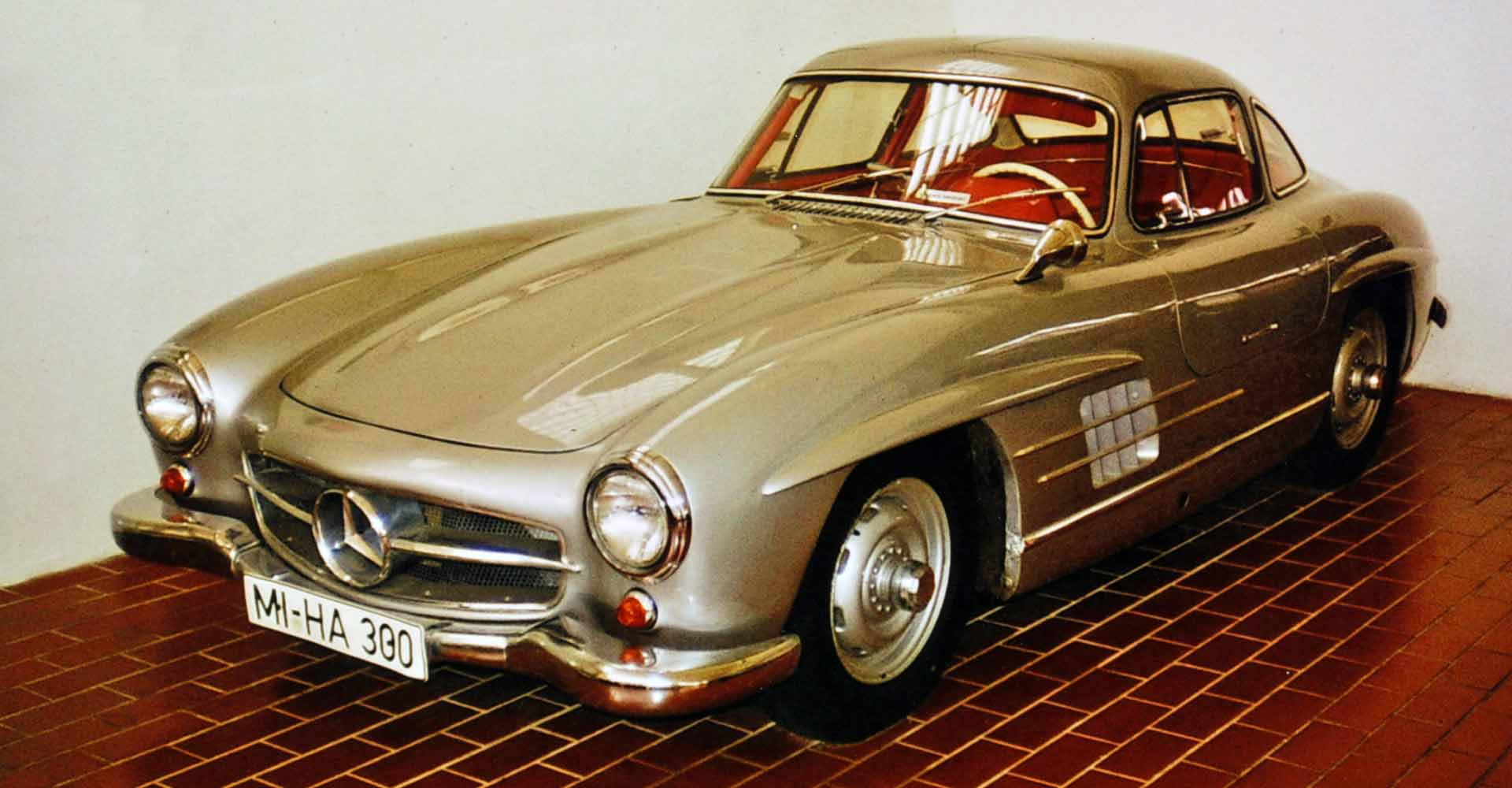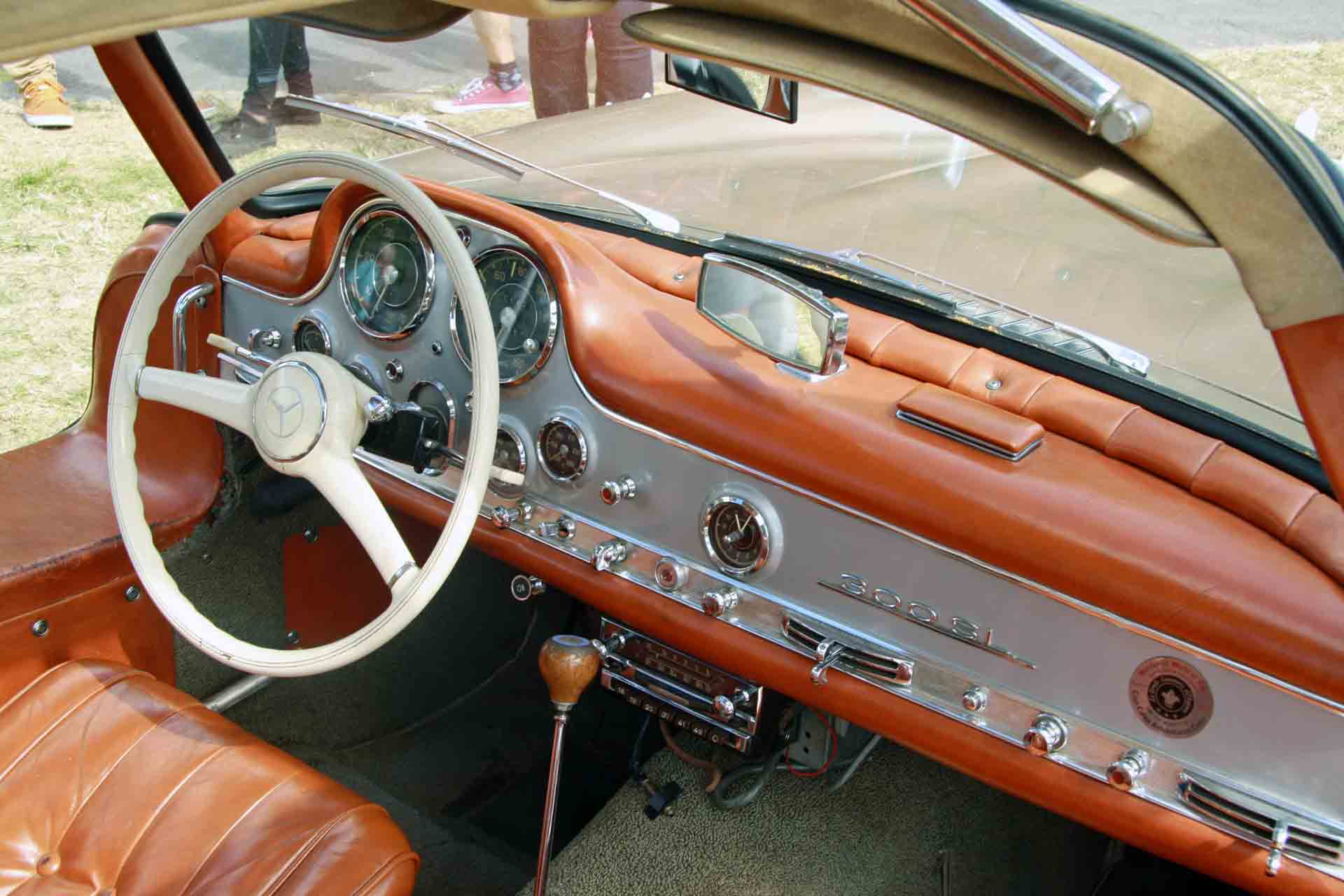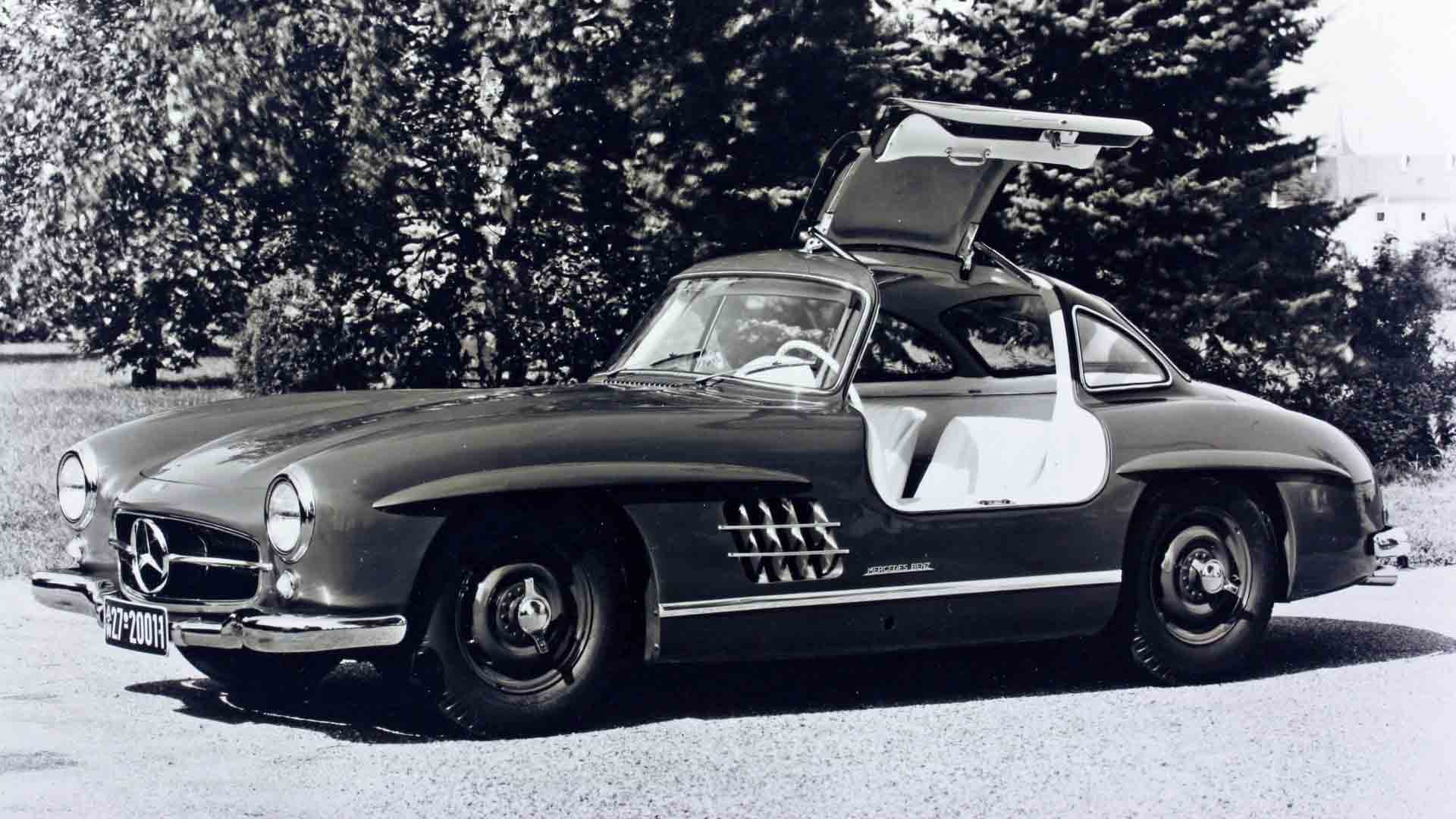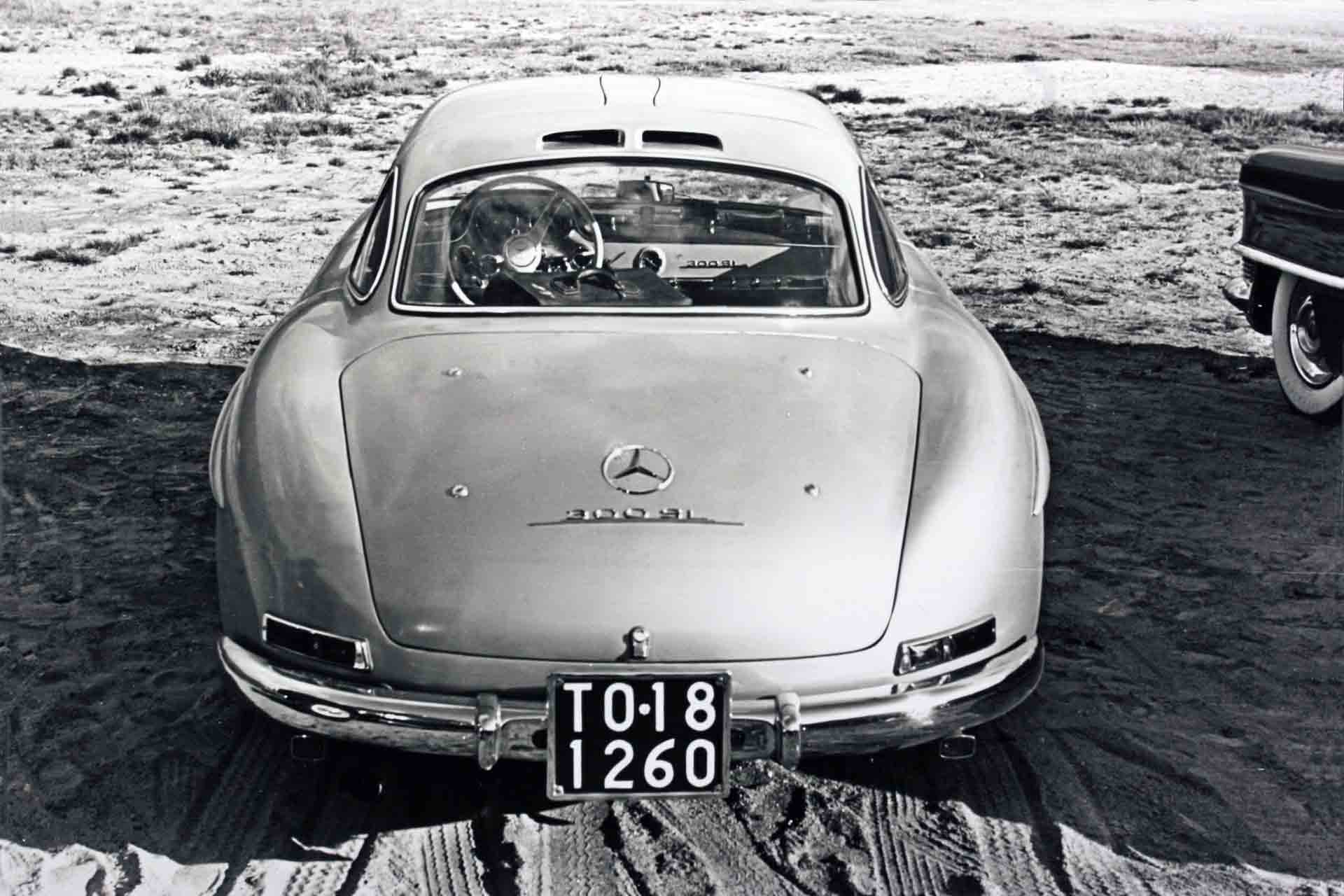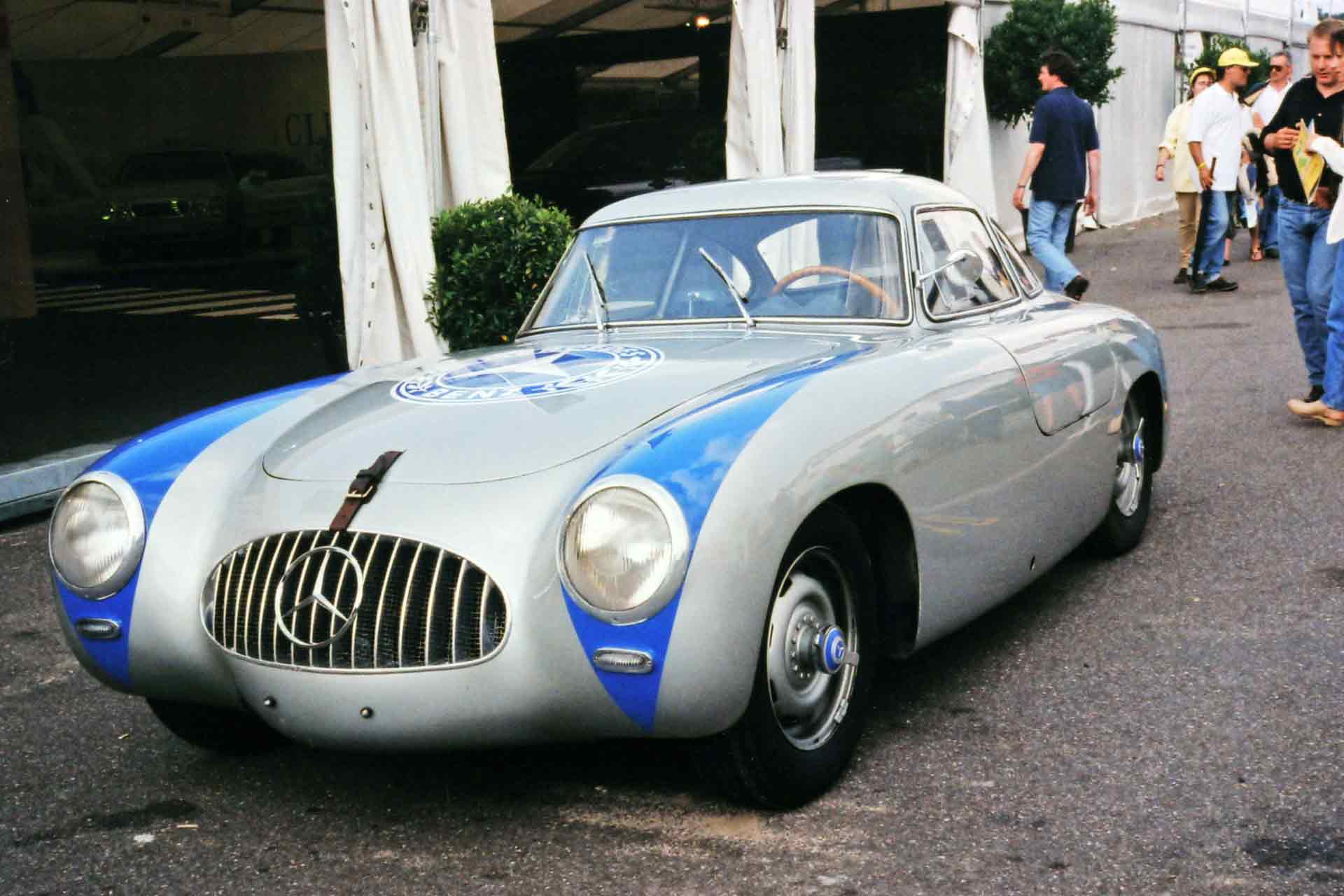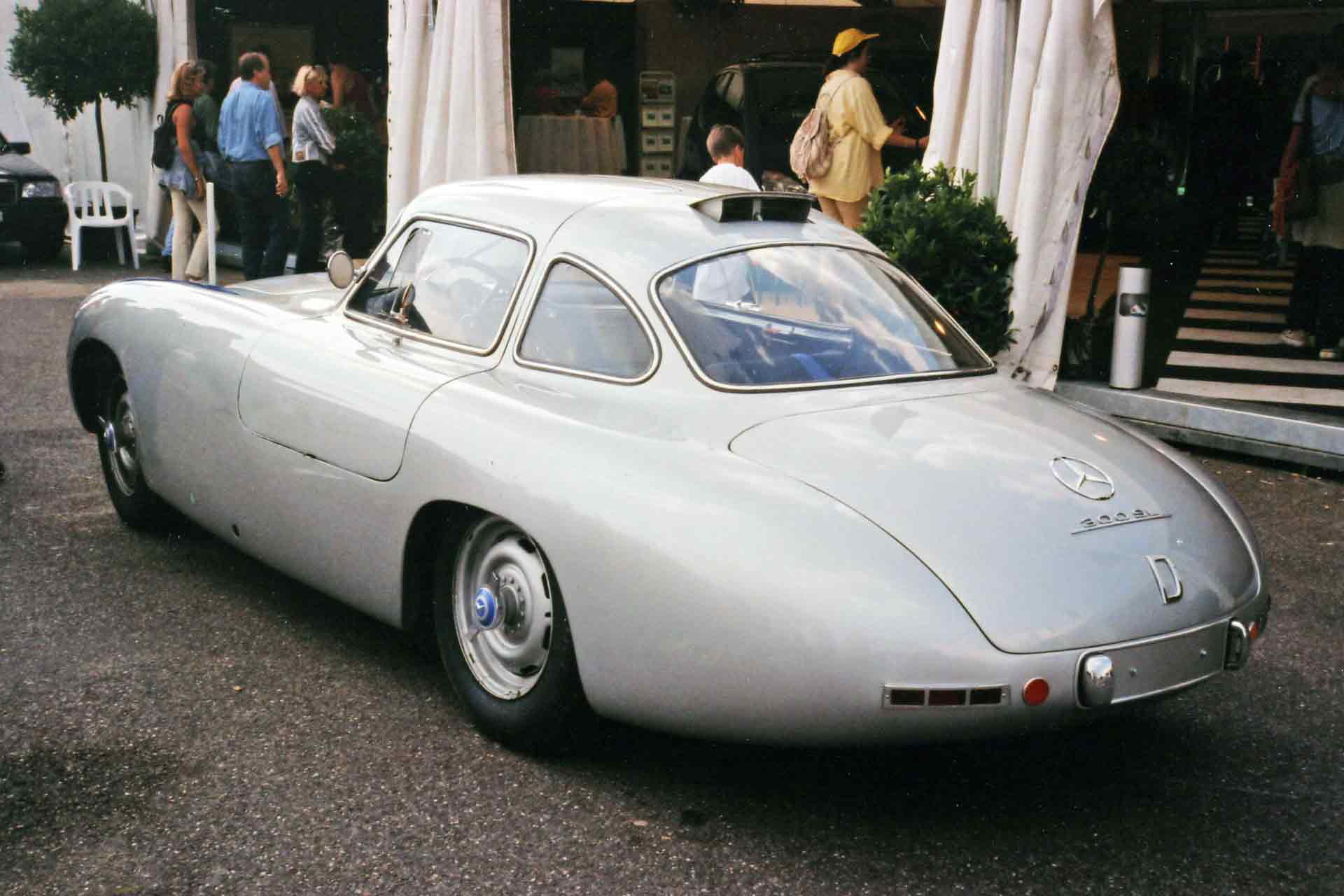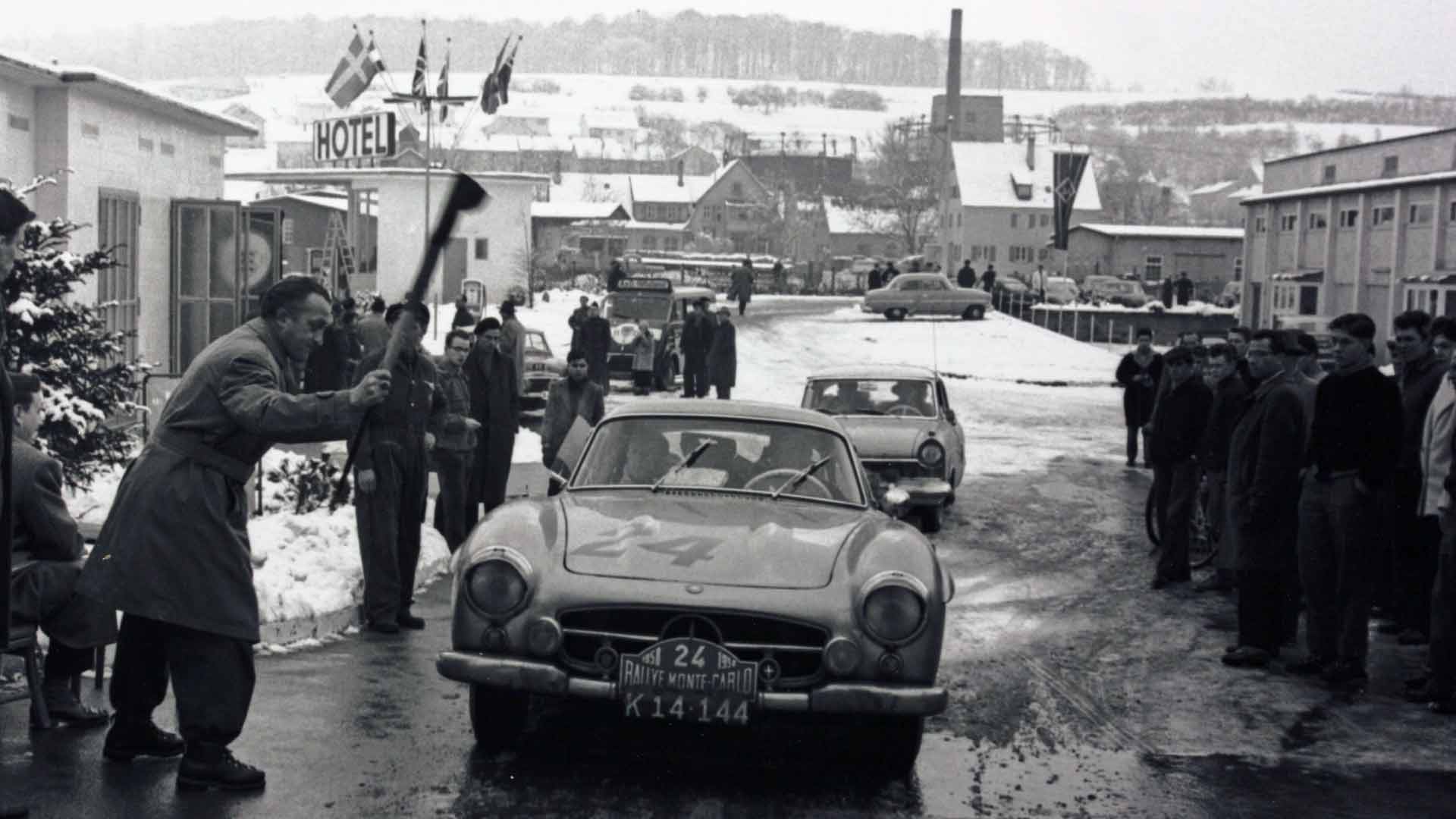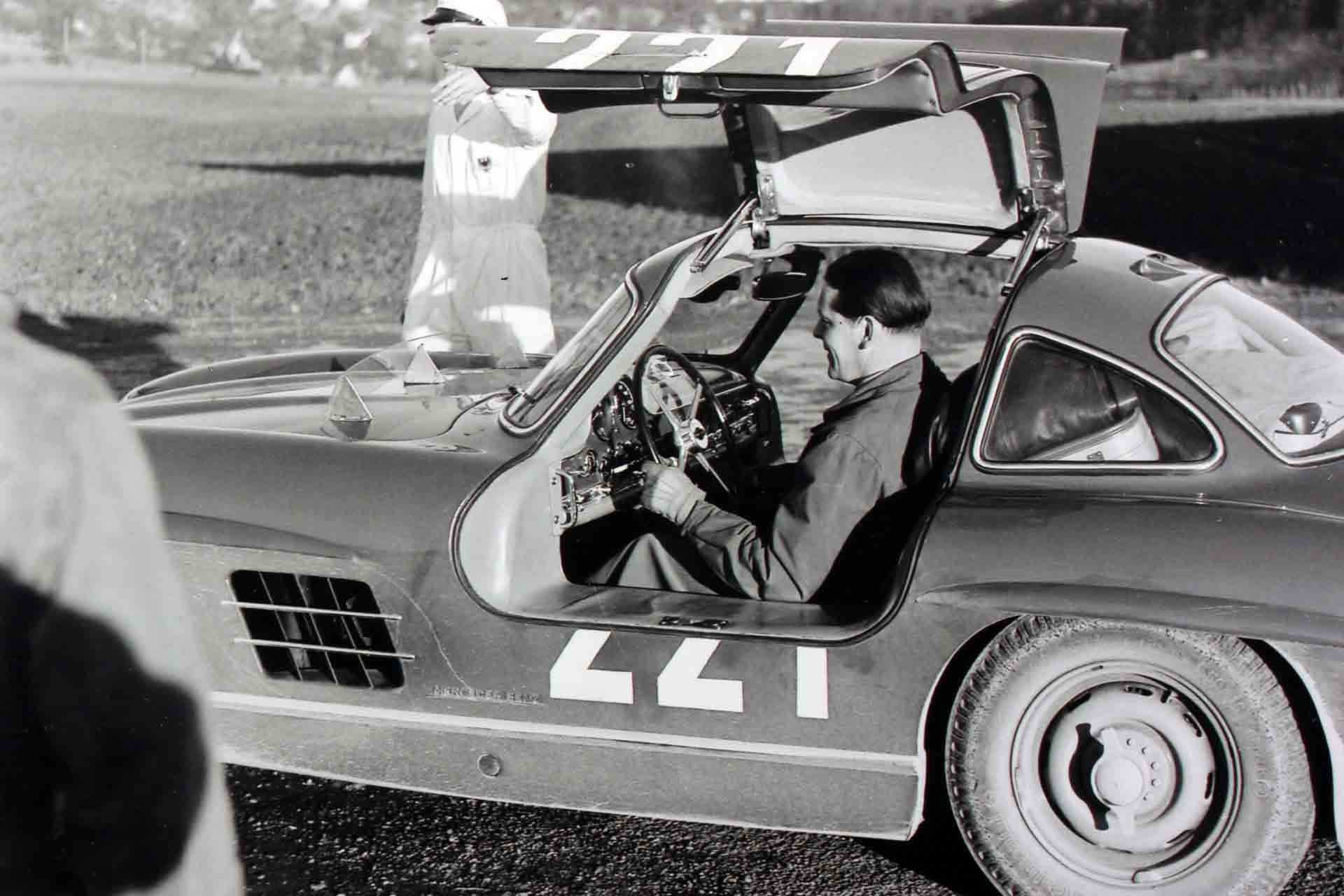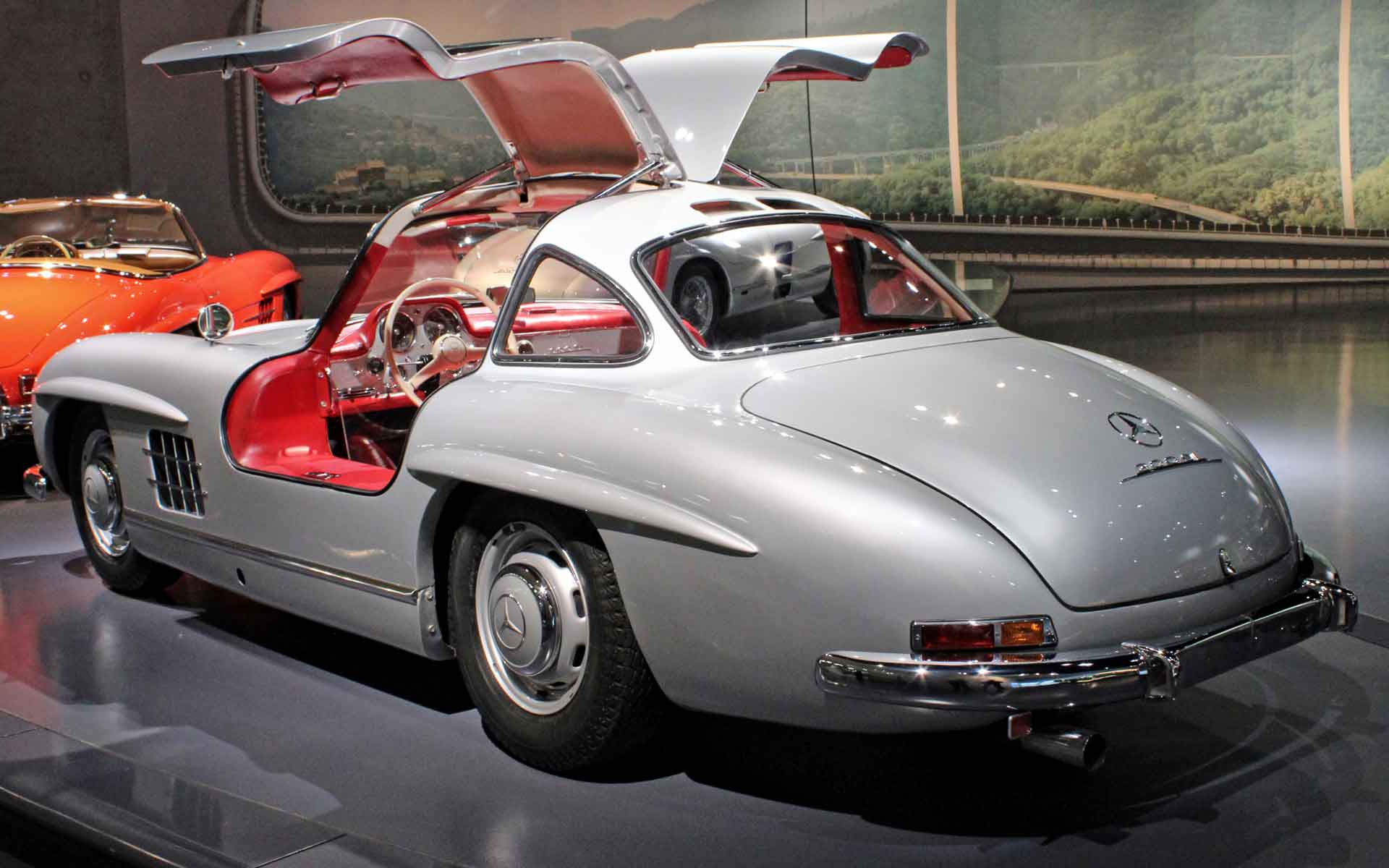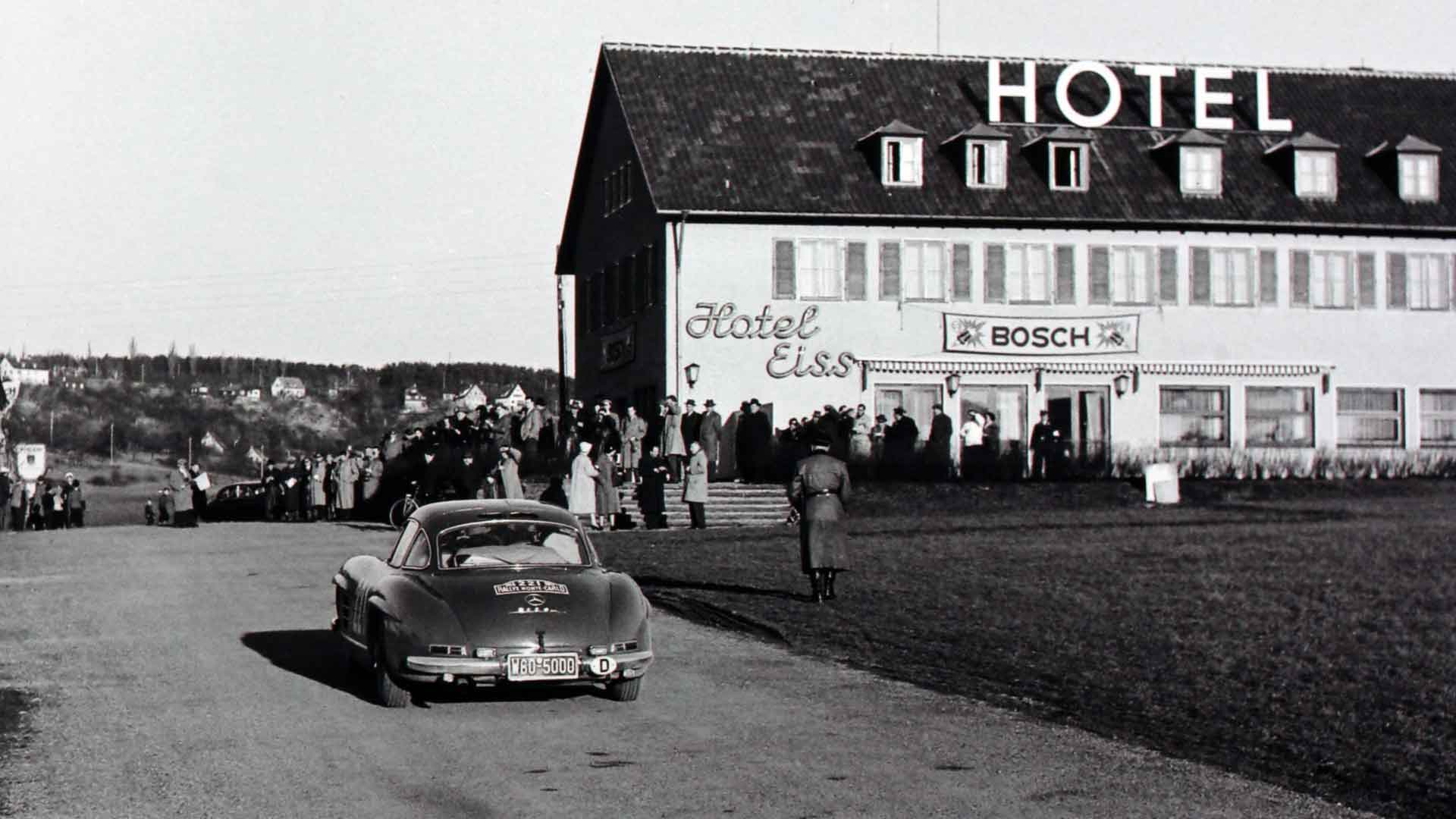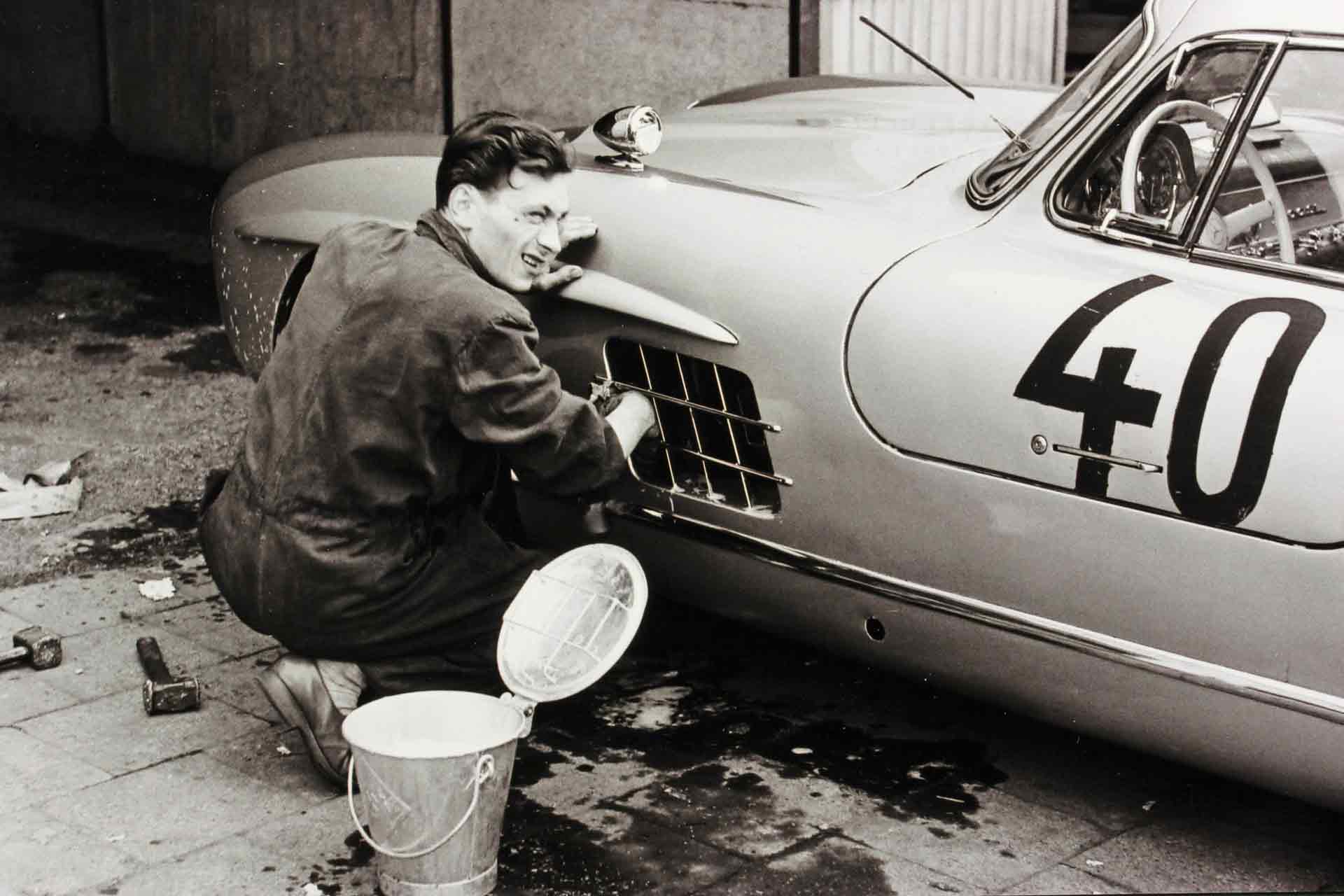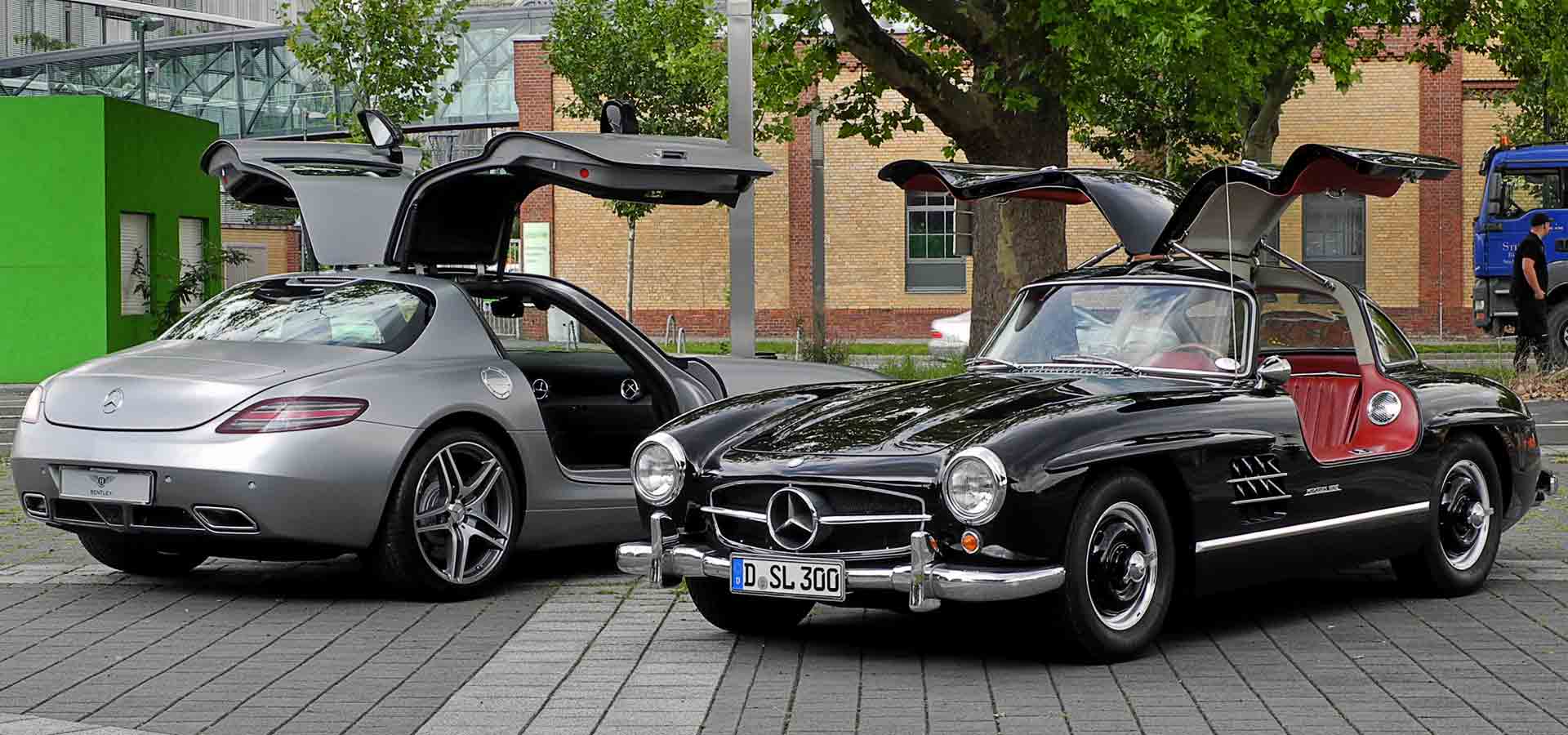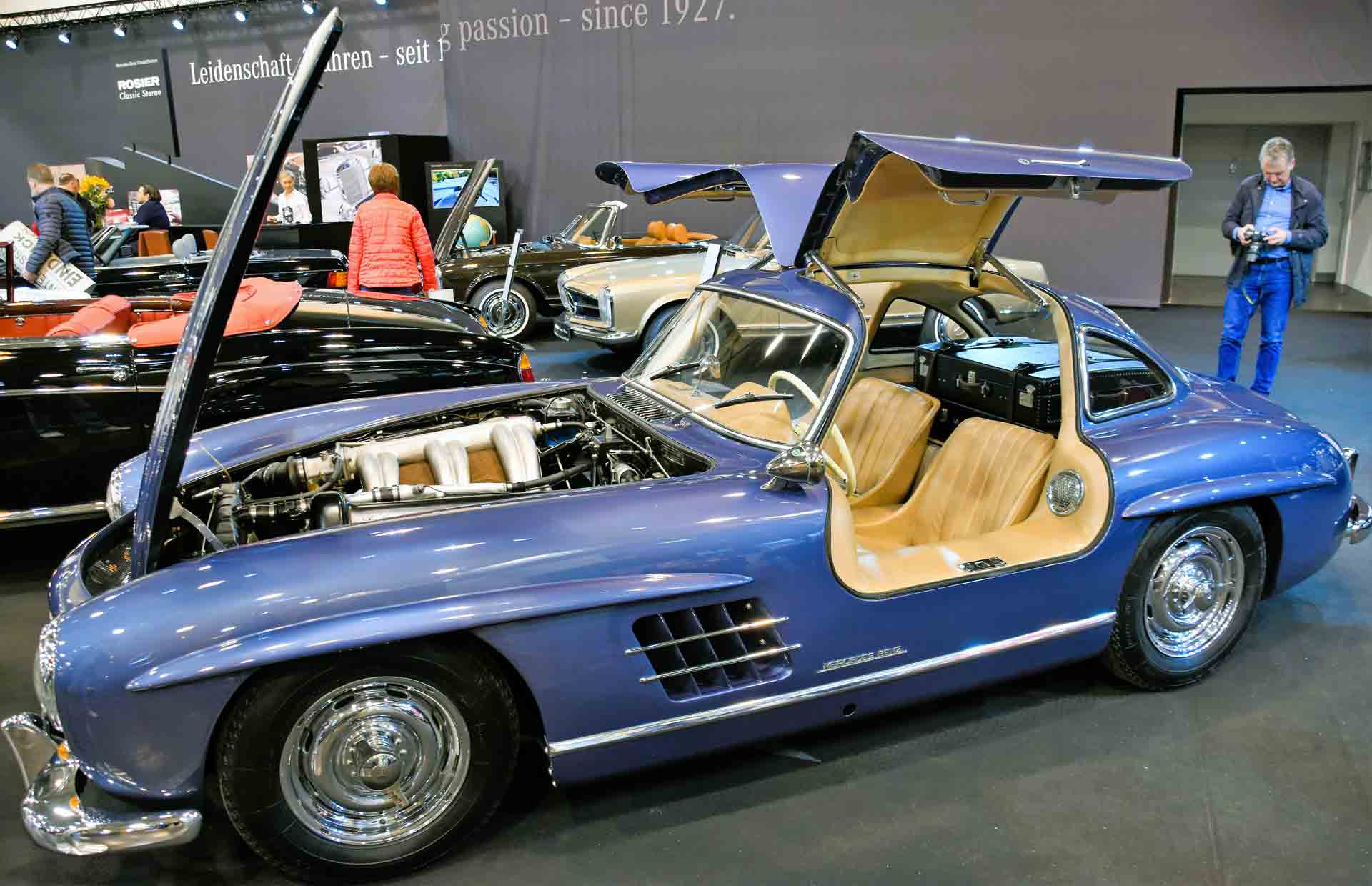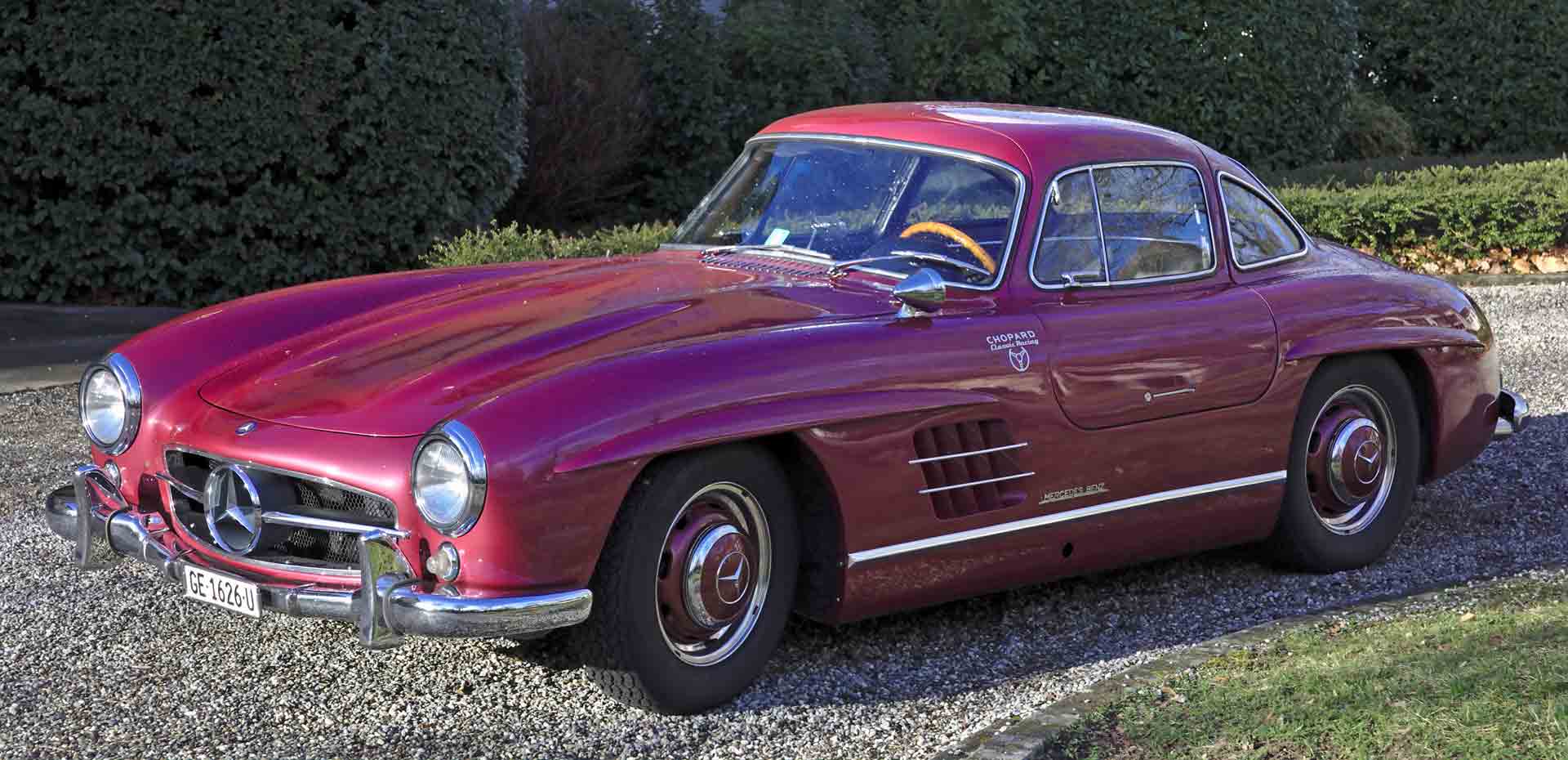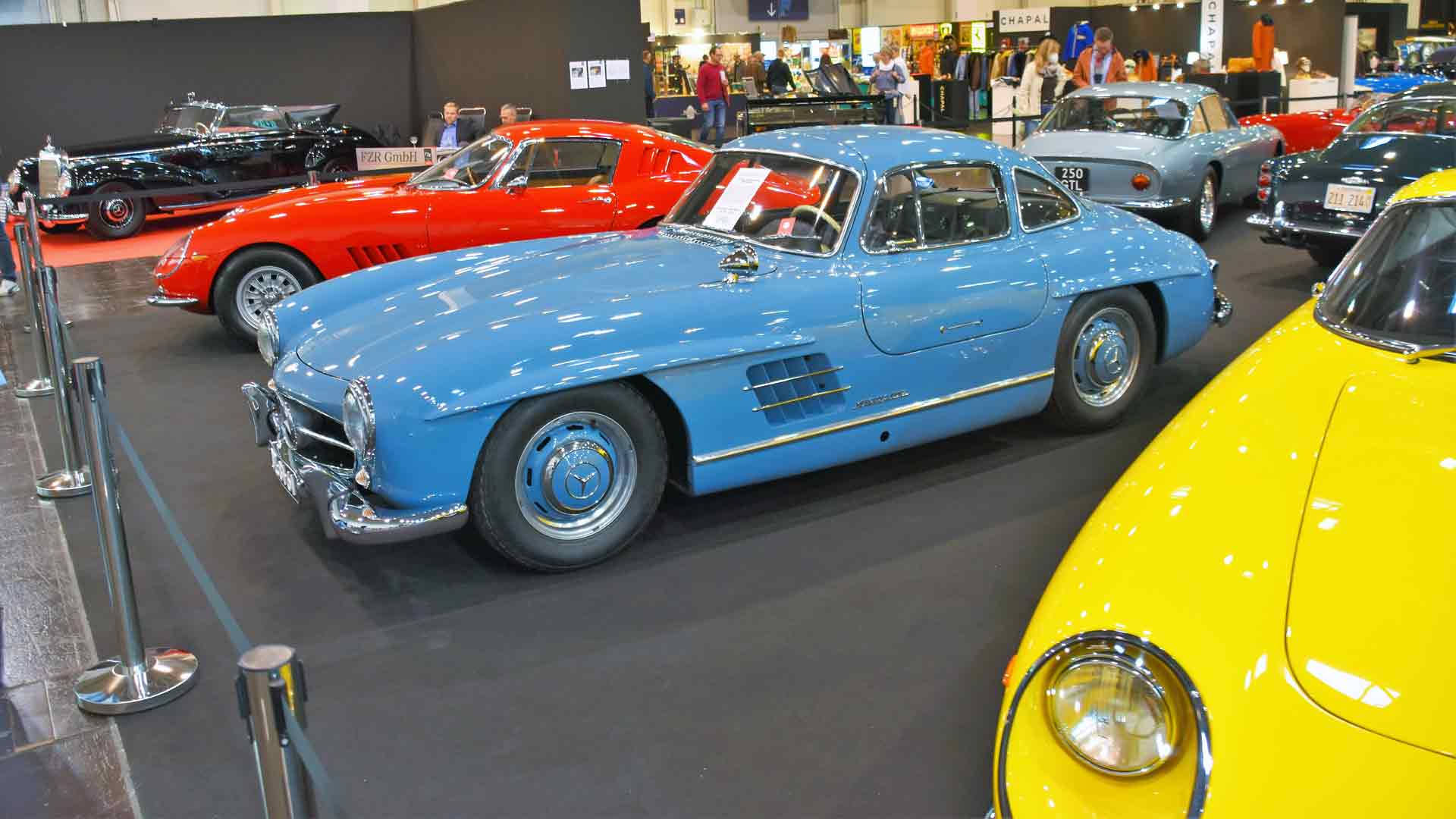Emotion or Pragmatism?
So many Gullwings in 1:87! And now another one from Herpa... Do we really need it? Oh yes, and bring it on! After around a year of development, Herpa is presenting a Mercedes 300 SL W198/I, the "Gullwing SL", at the 2024 International Toy Fair in Nuremberg. An icon in automotive engineering, an exceptional vehicle, a legend. You simply can't get enough of it!
You don't need to see the car. Just look at the dashboard and you know it's a Mercedes 300 SL. Photo: Jiří Sedláček
There will always be the doubters, the shrewd minds, the accountants. They’ll tell you that an investment is an outlay of money, and that our company is not there to spend money, but to earn money. They would say: There are already so many 1:87 Gullwing SLs that every collector who wants one already has one. So, there’s no need for Herpa to make another one. From their point of view, they are right. But not from a collector's point of view. Firstly, the legendary 300 SL is such an icon that every self-respecting model car manufacturer should have it in their range. And secondly, there are enough collectors who want a 300 SL from Herpa and only from Herpa. They know that it was already available in 1955, when it was new, as an unglazed Wiking model, then in a glazed version, and as a Veteran model, not to mention the offerings of a number of other manufacturers. But they don't collect antiquated Wiking cars and certainly not miniatures from just any manufacturer. They collect Herpa. We are their brand. And they want a 300 SL from Herpa. Now they can have it!
The typical factory photo with open gullwing doors. The Anglo-Saxons called it the "Gullwing", the French "Papillon" (butterfly wing). Meanwhile, the Germans weren’t so specific: the name "Wing-Door" sufficed. Photo: Daimler-Benz archive
But as the saying goes: give someone an inch and they’ll take a mile. Will the Herpa collectors be satisfied with the 300 SL Gullwing alone? Or will they immediately be asking for the 300 SL Roadster as well, the legitimate successor to the Coupé? One thing at a time. Now it's the Coupé's turn. And you will have to be happy with what you get and not always clamor for what is not (yet) available.
Sighted where the rich and famous go on vacation: a Rome-registered 300 SL in Pontresina, Switzerland, in August 1958. Photo: afs archive
Not just a car but a symbol
The Gullwing is a car. But it is more than that. It is also a symbol. As this elevates it above its existence as a car, it has become a legend. Of course, it is pure engineering art, and so superior to its contemporaries of the 1950s, that in many ways, it is still compelling as a vehicle today. Leaving aside the nostalgic moment, from a purely pragmatic point of view, it is quite a pain to drive any other 1955 vintage car today. Driving a '55 300 SL today, on the other hand, is more than just an emotional revelation. Even if pure pragmatism were foremost, the 300 SL is superior to the traffic of 2024: you don't just keep up, you leave them all behind. It is still fast, sporty, and agile to this day. In comparison, a Mercedes-Benz Ponton of the same vintage is a rolling traffic hindrance, in contrast to which a 300 SL remains destined for the overtaking lane. We’re talking 2024! Back then, the left-most lane couldn't be empty enough. Because this automobile was simply the fastest of the fast, the most outstanding of the extraordinary, not just nationally but internationally. Most of the 1,400 Gullwings were exported to the USA (where they were given that affectionate designation), but today most of them are back home, re-imported as classics. What does the 300 SL stand for, why is it more than just a car, why is it a symbol? To find out, you have to go back to its time, 70 years ago. Its time was that of the German economic miracle, the bright years after the darkness of the war and the deprivation of the post-war period.
The road-going 300 SL goes back to the W194 racing prototype, which for the first time had a tubular frame under an all-aluminum body. It came, saw, and won in 1952: Le Mans, the Eifelrennen at the Nürburgring, and the Carrera Panamericana. Seen here in 1997 in Zolder, Belgium. Photo: afs archive
Before the war, the Silver Arrows were among the leading cars on the racetracks of the world. After the war, German drivers at first were not allowed to participate in Grand Prix, so Daimler-Benz had no reason to construct new designs. But it did get involved in sports car racing. 1952 saw the launch of the Mercedes W194, known as the 300 SL, a pure racing car with gullwing doors. In 1953, everyone was talking about the Carrera Panamericana and the outstanding performance of the Mercedes team with drivers Kling/Klenk and Lang/Grupp. Incidently, this was the reason why Max Egon Becker called his finest car radio the "Becker Mexico". Building on this success, Mercedes constructed a production sports car for the road, the W198, the Gullwing Coupé. For West Germans, this car meant a great deal when it was presented in 1955 - at least as much as winning the World Cup the year before: it meant they had returned to their best form. The world no longer talked about them only negatively, no longer just in connection with the war. Germany was spoken about positively all over the world because of its outstanding achievements. This was balm for the maltreated souls of post-war Germans, who endured real starvation in the aftermath of the lost war, were subsequently de-nazified, lived in an occupied country, and had no international sovereignty. Their Chancellor Konrad Adenauer restored their prestige in the world, their national football team showed the world what West Germany was capable of in sporting terms, and their industry created products that were admired internationally, which even the Americans were keen on. The Mercedes 300 SL was therefore one of the factors that helped West Germans overcome their trauma.
Today, the 300 SL is a frequent guest at historic racing events. But even in its active days, it loved racing: Rallye Monte Carlo 1958, the Oslo starters at the Touring Motel in Tübingen. Photo: afs archive
An absolute phenomenon on the road
So, the Gullwing was an absolutely exceptional automobile - not least because of its gullwing doors. 1400 coupés were built between 1954 and 1957, making it a rather rare sight. Roadside encounters with a 300 SL were a rarity. When you saw one, you couldn’t remain calm, even a complete automotive ignoramus would be blown over. Pedestrians’ heads were firmly turned, drivers forgot to concentrate on the road. If a boy saw one, it was important news for his friends at school. In fact, if you specifically wanted to see a 300 SL, you had to go to a large Mercedes dealership where one might possibly have been on display as a new car. If a schoolboy asked politely, he may have got a brochure from the Mercedes salesman. But he had to ask very nicely, and the salesman had to be having a good day.
Once again, the Monte, but two years earlier: Max Egon Becker, the car radio manufacturer, finished in 223rd place. Being there was the main thing! Photo: afs archive
More units of the open-top successor, the 300 SL Roadster W 198/II, were on the road, 1858 units produced by 1963. It was more practical, and it didn't always look very elegant when the driver had to clamber over the high sill into the interior and reach up to close the door. Fair enough for the gentleman himself, but a female passenger, no matter how agile, definitely had her difficulties. And ladies didn't wear pants back then either. And they also wore their hair up. This was one reason why the 300 SL Gullwing was not merely a man's car, but even more so, a solo driver's car. You enjoyed it most driving alone. If a girlfriend, wife, or other female companion was involved, the man of the world would have had a second car, probably also chic, but definitely easier to get in. It has to be said that accessing the Gullwing was hardly a piece of cake.
In the style of the Silver Arrow, the 300 SL was primarily painted silver, with a red interior, which Herpa have adhered to. Exhibit in the Mercedes Museum. Photo: Alexander Migl
Getting into the Roadster was more conventional and less problematic, even when the hardtop was fitted. But of course, you drove a Roadster with the top down. After all, you wanted to present yourself and your girlfriend to the world. The Roadster was also more suitable for long-distance travel, as it had reasonable trunk space. The single-joint swing axle was fitted with a compensating spring, and late roadsters had disc brakes instead of drum brakes.
Becker's car again during the 1956 Monte Carlo Rally, here the check in Stuttgart-Eiss. Photo: afs archive
The US jet-set was primarily responsible for Daimler-Benz turning the coupé into a roadster. And because so many people dreamed of the 300 SL, but only few could afford one, Daimler-Benz responded with the 190 SL, the little brother of the 300 SL, only half the price of the latter and comparable to the Porsche 356.
An unworthy job for a mechanic: cleaning the air vents. Seen at the 1,000 km race on the Nürburgring in May 1957, Wolfgang Seidel's car, ultimately came 21st. Photo: afs archive
A second attempt:
the Herpa Gullwingr
Many years ago, around 1997, Herpa already had a gullwing model on offer. However, this was not a genuine Herpa model. Rather, it came from Monogram, an American plastic kit manufacturer from Chicago, which launched a 1:87 series on the US market at the time, their "Mini-Exacts".
Herpa's initial colors: Gullwing in black, here in peaceful coexistence with its reasonably current gullwing epigone, the SLS AMG (C197), built between 2010 and 2014, also part of the Herpa mold pool. In theory, one could imagine a Herpa set containing both in "matching colors". Photo: M 93
Sadly, version one was rather unsuccessful, Herpa acquiring the Monogram molds and thus some classic Yank tanks in its range. Standing out among these was the 300 SL (Herpa number 032025), because it had indeed had a prominent role on the US market. This was, unfortunately, not a particularly good model, and so, rightly forgotten.
Examples of "crazy colors" that Herpa could dip into: Denim blue metallic plus a light leather luxury beige interior ... Photo: Charles
The new design is quite different. This is a model according to the current state of the art and a Herpa in-house design, so it has the Herpa DNA. It has separately applied chrome parts, it has two-piece, openwork rims, and is printed to the accustomed Herpa standard. And above all, the proportions and dimensions are right. The colors of the two first models are a bit clichéd, namely silver metallic and black, each with a red interior. But that's how you have to start when you dive into the subject of the 300 SL Gullwing.
... or raspberry red metallic ... Photo: Alexander Migl
The truly exciting colors, some of which only one single car ever received, will come later. And there are some truly extraordinary colors. The history of the 300 SL is fully documented, so there are no secrets. There are even directories that list the colors and interiors of all 1,400 vehicles delivered. A truly wide scope! Herpa will have no difficulty producing color variants. And things will get very colorful!
... or a bright blue uni paint, as exhibited at the 2023 Techno Classica. Photo: Charles
Text: Alexander Storz
Facts & figures
Mercedes 300 SL Coupé W198/I
Production: August 1954 to April 1957
Design: Friedrich Geiger
Presented: International Motor Sports Show New York, February 1954
Quantity: 1,400 units at the Mercedes plant in Sindelfingen
Price: 29,000 DM

